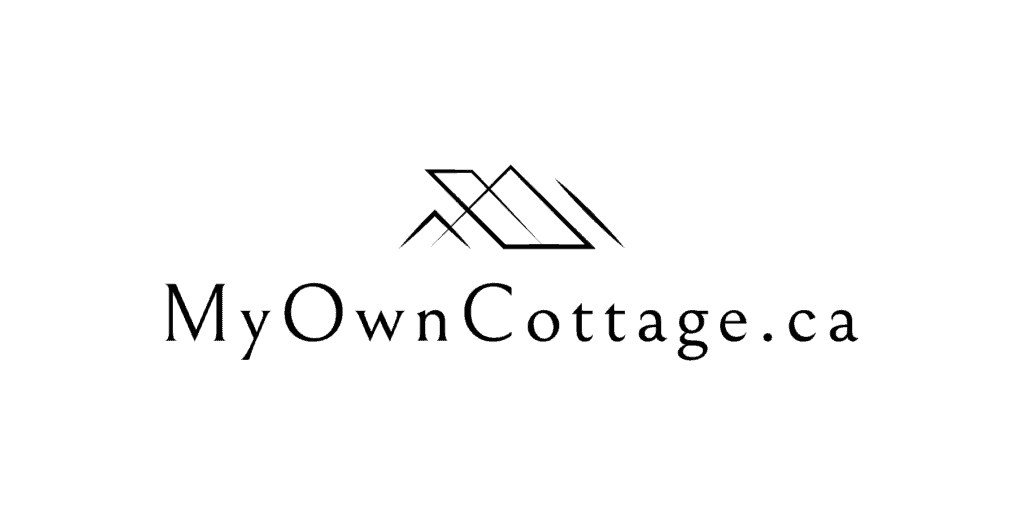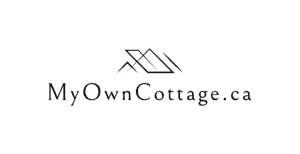How to Buy a Prefab Home in Ontario: Buyer's Guide
Home » How to Buy a Prefab Home in Ontario: Buyer’s Guide
Learn how to buy a prefab home in Ontario with our step-by-step guide.
Discover costs, financing options, permits, and top manufacturers.
You’ve probably already heard of prefab homes before or are currently looking for a better, more modern homebuilding option.
However, you can start your prefab journey even faster today with our prefab home builders Ontario collection!
So, what if there was a faster and smarter way to build a custom home for you and yours?
Enter prefab homes in Ontario.
Beautiful Homes with Prefab
From design preferences to budget considerations, we're here to ensure your new home is everything you've imagined and more.
Getting Your Dream Home in Ontario
The dream of owning a home in Ontario is more achievable than you think.
Enter the world of prefab homes, where affordability, quality, and efficiency meet.
This extensive guide is designed for homebuyers eager to explore the world of prefabricated homes in Canada.
We’ll be offering a comprehensive overview of everything you need to know to make an informed decision.
The Process of Buying a Prefab Home in Ontario
Prefab, or prefabricated, homes are constructed off-site and assembled on your property, providing numerous benefits.
In this article, you’ll learn about the process of buying a prefab home in Ontario.
We’ll go from understanding what they are to securing financing and choosing the right builder.
Let’s get started on finding your perfect home in the beautiful region of Ontario, Canada.
Definition of Prefab Homes
Prefab homes, short for prefabricated homes, are residences that are constructed off-site in a factory setting.
Once complete, they are then transported and assembled at their final destination.
Unlike traditional homes, which are built entirely on the construction site, prefab homes are manufactured in sections, often called modules.
These are then put together like building blocks.
A Better Method of Construction
The prefabrication method of construction offers several advantages, including reduced construction time, minimized waste, and usually lower costs.
It allows for efficient use of materials and economies of scale.
Prefab homes come in various styles and sizes, ranging from simple modular designs to luxurious, custom-built structures.
They must adhere to local building codes, ensuring they meet safety and quality standards.
This innovative approach to home building is gaining popularity in Ontario.
Here, it meets the demand for affordable, sustainable, and quickly deliverable housing options.
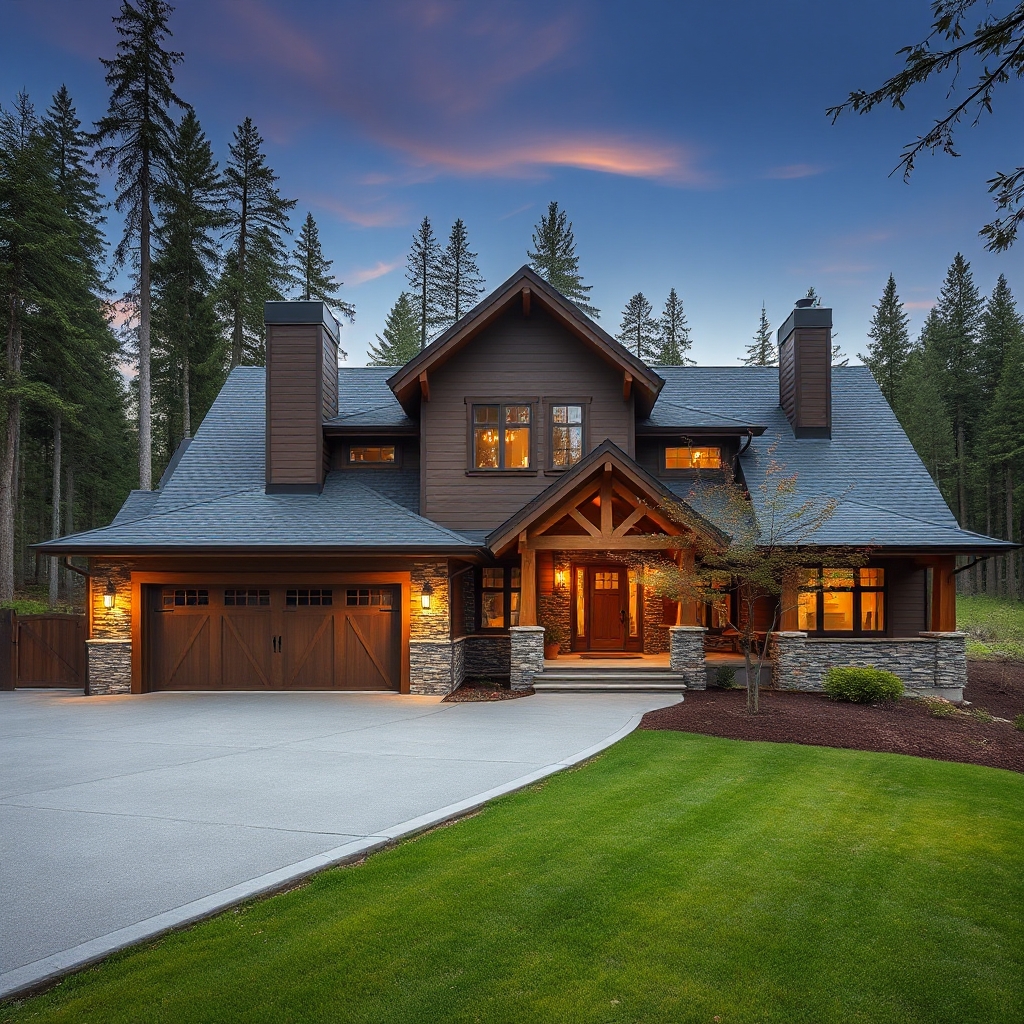
Benefits of Prefab Homes in Ontario's Climate
Prefab homes offer numerous benefits in Ontario’s varied climate, making them an excellent choice for potential homeowners.
Firstly, these homes are designed to be exceptionally energy-efficient, with tightly sealed building envelopes and high-quality insulation.
This provide superior protection against Ontario’s cold winters and hot summers.
Such efficiency translates into reduced heating and cooling costs, aligning with the province’s emphasis on sustainable living.
Enhancing Resilience to Extreme Weather
Moreover, prefab homes can be customized with features such as triple-glazed windows and geothermal heating systems.
This is enhancing their resilience to extreme weather patterns.
Additionally, the controlled factory environment where prefab homes are built ensures that the materials used are not exposed to moisture.
In construction, exposure to moisture could otherwise lead to structural issues.
As a result of being protected from this, prefab homes tend to be more durable and long-lasting.
Faster Assembly On-Site
This method of construction also means quicker assembly on-site.
Minimizing the impact of weather delays typical in Ontario’s unpredictable climate is key to an effective construction process.
Thus, prefab homes not only offer a cost-effective and environmentally friendly option.
Rather, they also adapt well to the province’s diverse weather conditions.
Current Market Overview
The current market for prefab homes in Ontario is witnessing significant growth.
This is being driven by increasing demand for affordable and sustainable housing solutions.
With urban centers expanding and land prices soaring, prefab homes offer a cost-effective alternative to traditional site-built homes.
Advances in Prefab Technology
Advances in prefab technology have resulted in high-quality designs that meet or exceed the standards of conventional construction.
This is further boosting their appeal among homebuyers.
As energy efficiency and eco-friendliness become priorities for consumers, manufacturers are responding.
Prefab home builders now offer innovative materials and construction methods.
This is allowing for greater customization and reduced environmental impact.
Despite Supply Chain Challenges
Despite supply chain challenges faced by the construction industry, the prefab sector in Ontario shows resilience.
It is being actively supported by government incentives and a growing interest in modular living.
This positive market trajectory suggests a promising future for prefab homes in the region.
All of these aspects are making it an opportune moment for buyers to explore this dynamic housing option.
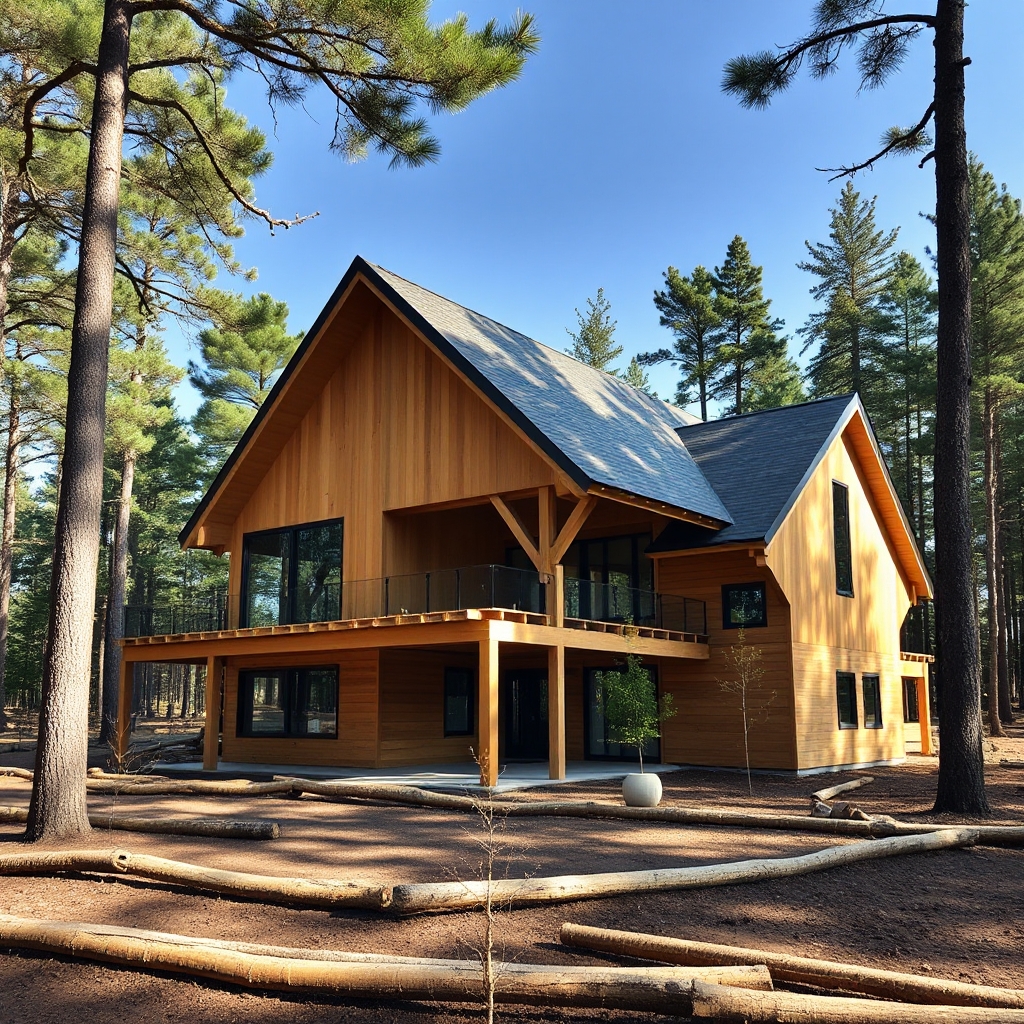
Types of Prefab Homes Available in Ontario
When considering the purchase of a prefab home in Ontario, it’s essential to understand the various types available to meet diverse needs and preferences.
The primary categories include modular homes, panelized homes, manufactured homes and mobile homes.
Modular Homes
Modular homes are an increasingly popular choice for homebuyers in Ontario due to their affordability, efficiency, and customization options.
These homes are constructed in sections in a controlled factory environment.
This helps to reduce construction time and costs compared to traditional site-built homes.
Once the modules are complete, they are transported to the home site and assembled on a permanent foundation.
This process ensures a high level of quality and structural integrity.
In Ontario, potential buyers should consider the advantages of modular homes.
These include their compliance with local building codes and the ability to tailor designs to suit personal preferences.
Panel-Built Homes
Panel-built homes are an excellent option for those seeking efficiency and flexibility in home construction.
These homes are constructed using pre-engineered wall panels, which are manufactured in a controlled factory setting.
Once complete, they are then transported to the building site for assembly.
This method greatly shortens construction time compared to traditional building techniques and significantly reduces waste.
The overall construction process makes it an environmentally friendly choice.
In Ontario, choosing a panel-built home can be cost-effective, as it typically involves less labor and lower associated costs.
Manufactured Homes
Manufactured homes, often considered an affordable entry point into homeownership, are prefabricated structures built on a permanent chassis.
These homes are primarily constructed in factories and then transported to their intended site.
In Ontario, purchasing a manufactured home involves several key considerations.
It’s important to understand zoning laws and land lease agreements, as these homes must be placed in areas zoned for manufactured housing.
Mobile Homes
When considering the purchase of a mobile home in Ontario, it is essential to understand the unique aspects that this type of prefab home involves.
Mobile homes offer an affordable and flexible housing solution.
However, they require careful planning and research.
First, identify an appropriate location for your mobile home.
Whether it’s in a designated mobile home park or on private land.
Ensure that the land is zoned for mobile homes and verify any community restrictions or bylaws.
Key Cost Considerations
When considering the cost of buying a prefab home in Ontario, it’s essential to look beyond the sticker price.
The pricing for prefab homes can vary significantly depending on the size, customization options, and the quality of materials used.
Market Entry Points and Additional Expenses
Base models might offer a more affordable entry point than traditional homes.
However, prospective buyers should consider additional expenses such as land purchase, delivery charges, and on-site assembly costs.
It’s also important to factor in costs for permits, utilities connections, and any necessary site preparation as well.
This may include items such as grading or foundation work.
Understanding Financing Options is Key
Financing options can also impact overall costs.
Comparing mortgage rates and terms tailored to prefab home purchases can lead to significant savings over time.
By taking a holistic approach to budgeting, informed buyers can better understand the total investment required.
This is key to avoiding unpleasant surprises down the road.
Average Prefab Home Prices in Ontario
When considering purchasing a prefab home in Ontario, it’s crucial to understand the average pricing to plan your budget effectively.
Typically, the cost of prefab homes in Ontario varies significantly based on factors such as size, design complexity, and customization options.
On average, you can expect to pay between $150 to $250 per square foot.
The Overall Expenditures Involved
For a basic model with minimal custom features, prices may start as low as $100,000.
In contrast, more luxurious models with high-end finishes can soar well above $500,000.
It’s also important to factor in additional costs like transportation, installation, site preparation, and permits.
All of these can influence the overall expenditure.
Comparing quotes from various manufacturers and understanding what each package includes is key.
This will provide better insight into the total financial commitment required for your dream prefab home.
Budgeting in Ontario
When purchasing a prefab home in Ontario, it’s essential to budget for several additional costs.
These go beyond the base price of the home itself.
Understanding these potential expenditures ahead of time can help you budget accurately.
It will also help you to prevent any unwelcome surprises during the home-building process.
Land Purchase
Purchasing land for your prefab home is a critical first step in the journey toward homeownership in Ontario.
The process involves careful consideration of several key factors to ensure the land suits your specific prefab needs.
Begin by determining the location, ensuring proximity to essential services like schools, hospitals, and grocery stores.
Also consider potential future developments in the area.
Evaluate the plot’s size and topography carefully.
These elements will influence the design and placement of your prefab home.
Site Preparation
Site preparation is a crucial step in the process of buying a prefab home in Ontario.
This lays the groundwork for the successful installation of your new residence.
The first step involves thoroughly assessing the land to ensure it meets all zoning, environmental, and accessibility requirements.
This often requires obtaining a land survey and conducting soil tests to confirm the site’s suitability for construction.
Lastly, the terrain must be leveled and cleared of any obstructive vegetation, rocks, or debris to provide a stable foundation.
Foundation
When buying a prefab home in Ontario, considering the foundation is a crucial step to ensure the longevity and stability of your investment.
The type of foundation you choose will depend on several factors such as soil conditions, climate, and your budget.
Typically, prefab homes can be set on a range of foundations including slab-on-grade, crawl spaces, and full basements.
Slab-on-grade is a cost-effective choice that performs well in areas with stable soil and mild climates.
Crawl space foundations offer more versatility and easier access to utility lines, making future maintenance more manageable.
Opting for a full basement can provide additional living space or storage but might involve higher costs and more complex construction processes.
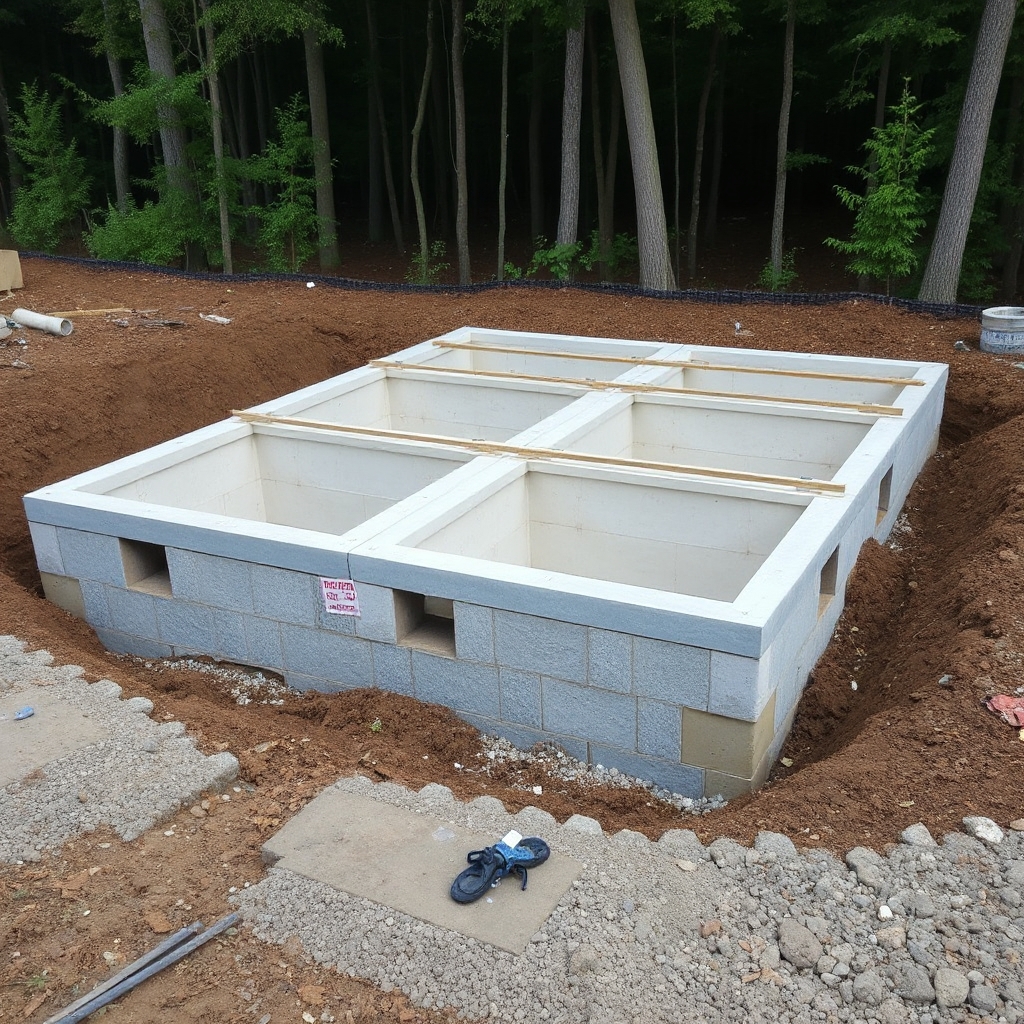
Utilities Connection
Connecting utilities to your prefab home in Ontario is a crucial step in ensuring comfort and functionality once your home is installed.
Begin by researching the providers of essential services such as electricity, water, natural gas, and sewage in your area.
Contact these providers early in the home-buying process to discuss the necessary steps for connection.
This may include further site assessments and permitting requirements.
It’s essential to understand the costs involved for each utility service and budget accordingly.
Ensure that your chosen prefab home manufacturer coordinates with local utility companies to facilitate a smooth setup.
Permits and Inspections
When purchasing a prefab home in Ontario, acquiring the necessary permits and scheduling inspections are crucial steps in the process.
Before initiating construction, you must obtain a building permit from your local municipality.
This ensures that your project complies with the Ontario Building Code, zoning bylaws, and other pertinent regulations.
The permit application typically requires detailed plans and specifications of the proposed home.
You must also submit further documentation involving the site and any potential environmental considerations.
Once construction is underway, a series of inspections will be conducted at various stages to verify that the building meets safety and construction standards.
These inspections might include assessments of the foundation, framing, electrical systems, and plumbing installations.
Passing each inspection is a pivotal milestone, allowing you to proceed to the next phase and ultimately achieve occupancy approval.
Working closely with local authorities and your builder can streamline this process.
Transportation and Assembly
Transportation and assembly are crucial phases to consider when buying a prefab home in Ontario.
They involve the logistics of moving your modular home to the desired site and putting it together.
The transportation process typically requires specialized equipment and vehicles.
These are used to safely carry the prefabricated modules from the manufacturing facility to the construction site.
It’s important to ensure that all necessary permits are secured for transporting the modules over public roads.
Once on-site, the assembly process begins, requiring skilled labor to align, connect, and anchor the modules securely.
This stage often involves cranes and a team of experienced builders who can efficiently piece together the home.
A reputable builder ensures structural integrity and compliance with local building codes.
Proper planning and coordination with experienced professionals are essential to minimize risks and delays.
This enables a smooth transition from the factory to your new home’s readiness for occupancy.
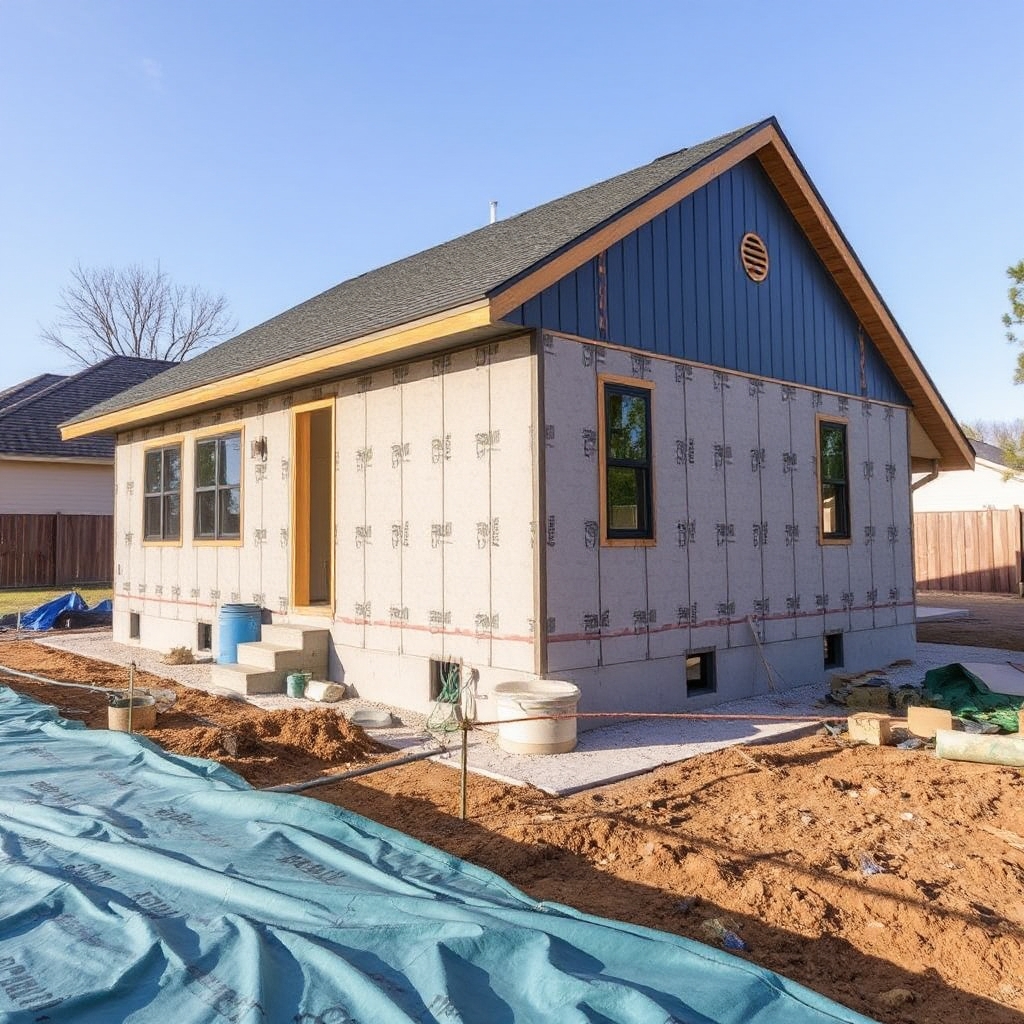
Comparison With Traditional Home Costs
When comparing the costs of prefab homes to traditional homes in Ontario, several factors must be considered.
Prefab homes are typically more cost-effective owing to efficient construction methods that reduce labor and material waste.
These homes are built in a controlled factory setting.
This minimizes delays due to weather conditions often experienced in conventional construction, thus lowering labor costs.
Additionally, bulk purchasing of materials for prefab homes can lead to significant savings.
On the other hand, traditional homes incur additional expenses related to on-site construction challenges, longer build times, and potential overruns.
However, while the initial price for a prefab home is usually lower, it’s essential to consider costs related to land purchase, utilities, and possible customization, which can vary widely.
Overall, prefab homes offer a more predictable budget without compromising quality.
This is making them an appealing alternative for cost-conscious buyers.
Finding Land for Your Prefab Home
Finding the perfect piece of land for your prefab home in Ontario is a crucial first step in the home-buying process.
Begin by determining your preferred location, considering proximity to work, schools, public transportation, and other amenities important to your lifestyle.
Prices and availability can differ significantly across Ontario, so keep your budget in mind while evaluating different parcels.
Finally, consider any future developments planned in the vicinity, as these can impact your land’s value and living experience over time.
Understanding Zoning Requirements
Understanding zoning requirements is essential when purchasing a prefab home in Ontario, as it determines where and how you can place your home.
Every municipality in Ontario has specific zoning laws.
These stipulate the type of structures that can be erected in different areas, such as residential, commercial, or industrial zones.
Before proceeding with your purchase, it is critical to consult with the local zoning office to ensure that your prefab home complies with these regulations.
Factors such as lot size, building height, setbacks, and land usage restrictions can significantly affect your project.
Additionally, zoning regulations may influence the design and customization options for your prefab home.
Engaging a local real estate lawyer or zoning specialist can be beneficial to navigate these legal complexities and attain the necessary permits.
Ensuring zoning compliance not only helps avoid legal issues but also ensures that your new home harmonizes with the community’s plans and aesthetics.
Municipal Regulations
When purchasing a prefab home in Ontario, understanding municipal regulations is crucial to ensure a smooth process.
Municipalities have specific zoning laws and building codes that dictate where and how prefab homes can be situated.
These regulations can vary significantly from one region to another, affecting everything from the maximum allowable size of the home to its placement on the lot.
It’s important to review the zoning bylaws to confirm that the intended property is approved for prefab structures.
Additionally, buyers should be aware that permits are typically required for the construction and installation of prefab homes.
This encompasses aspects such as electrical, plumbing, and mechanical systems.
Engaging with local planning departments early in the process can help address any particular requirements.
This includes items such as adherence to local architectural styles or environmental considerations.
Navigating these municipal regulations with the help of a professional, such as a real estate agent familiar with prefab homes, can ease the process.
This also helps to ensure compliance, thereby paving the way for a seamless home-buying experience.
Land Assessment Checklist
When purchasing a prefab home in Ontario, conducting a thorough land assessment is crucial.
Start by evaluating the location’s accessibility.
Ensure that roads to and from the property are well-maintained for easy transportation of materials and access to utilities.
Next, assess the soil quality.
Perform a soil test to determine its suitability for construction, making sure it’s stable enough for the foundation.
Verify zoning laws and land use restrictions to confirm compliance with local regulations.
Check for any environmental concerns, such as flood zones or protected wildlife areas, which might affect building permits.
Additionally, consider the orientation of the land for optimal sunlight and energy efficiency in your prefab design.
Conduct a survey to map out the exact boundaries and avoid future disputes with neighbors.
By meticulously following this land assessment checklist, you can mitigate risks and ensure a smooth building process for your prefab home.
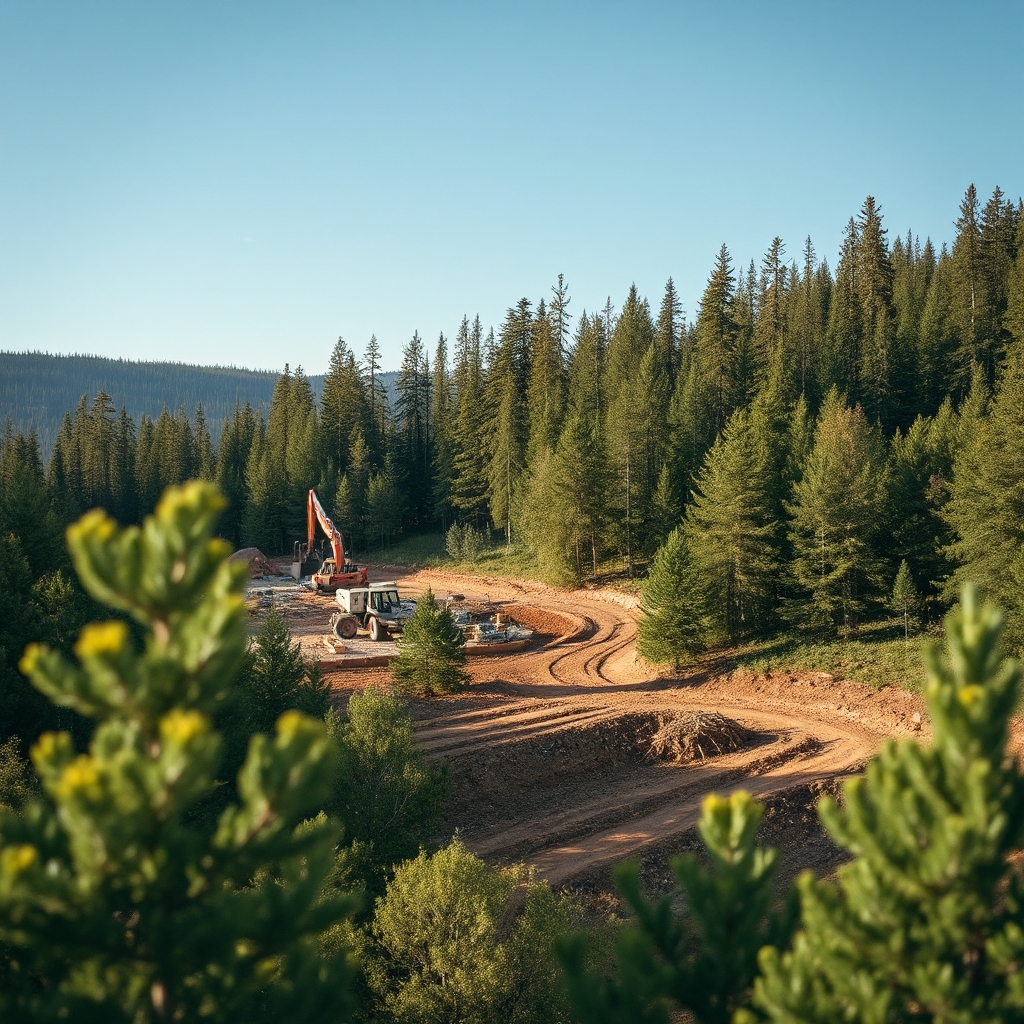
Access to Utilities
Access to utilities is a crucial consideration when purchasing a prefab home in Ontario.
It can greatly influence the feasibility and cost of your investment.
Before finalizing your purchase, you should thoroughly investigate the availability and cost of connecting essential services.
This includes water, electricity, gas, and internet to your prospective property.
In some rural or remote areas, the infrastructure for these utilities may not be readily available.
This can lead to potential additional costs for alternative solutions.
These include drilling a well, installing septic systems, opting for solar energy and satellite internet.
Additionally, you should verify the local regulations and requirements for utility connections.
They may vary across municipalities.
Consulting with the local utility providers and seeking the guidance of a knowledgeable contractor can help you estimate these costs.
Be sure to navigate any bureaucratic hurdles effectively using these connections as a resource.
By thoroughly assessing access to utilities early in the buying process, you can prevent unexpected expenses.
These ideas will help you to ensure a smooth transition into your new prefab home.
Environmental Considerations
When purchasing a prefab home in Ontario, it’s essential to consider the environmental impact and sustainability of your choices.
Prefabricated homes are often hailed for their eco-friendly credentials.
They typically generate less waste during construction and use energy-efficient manufacturing processes.
However, buyers should delve deeper into the specific materials used in the construction of the home.
Opt for sustainable, non-toxic materials that will enhance the home’s energy efficiency and minimize adverse environmental impacts.
Consider the home’s insulation quality, window efficiency, and the potential for installing renewable energy solutions like solar panels.
Additionally, investigate the manufacturing plant’s practices.
Be certain that they adhere to environmental regulations and aim for minimal carbon footprints.
By prioritizing these factors, you can make more responsible choices that contribute positively to both your immediate living environment and the planet’s health.
Location Factors
When considering the purchase of a prefab home in Ontario, location factors play a crucial role in the decision-making process.
Begin by assessing the proximity to essential services such as schools, hospitals, and supermarkets, which can significantly enhance the quality of life.
Additionally, consider the accessibility of public transportation, as this can influence daily commutes and overall connectivity.
The community’s safety and crime rates should also be evaluated, ensuring peace of mind for future homeowners.
It’s important to research local zoning regulations and building codes, as these might affect the placement and design of your prefab home.
Finally, think about the environmental elements such as the climate, natural landscapes, and potential for future development in the area.
These can impact both the property’s enjoyment and its long-term value.
Taking these factors into account will aid in selecting a location that not only meets immediate needs.
It will also ensure that the location contributes to the home’s future appreciation and livability.
Financing Options
Understanding your financing options is a crucial first step in buying a prefab home in Ontario.
Traditional mortgages are available, but they may not always suit prefab purchases.
This is due to the different nature of construction and purchase processes.
Instead, some homebuyers opt for construction loans.
These allow for financing based on the property’s projected value once construction is complete, providing flexibility for prefab buyers.
Manufacturer Financing and Government Incentives
Manufacturer financing is another viable option.
Many manufacturers offer tailored financing packages that cater to the unique needs of prefab homebuyers.
It’s advisable to compare these options with traditional and construction loans to determine the best fit for your financial situation.
Additionally, explore government programs and incentives available in Ontario.
These can provide subsidies or rebates for energy-efficient home features.
Down Payment Requirements
Down payment requirements for prefab homes can vary significantly, so it’s important to confirm these with your lender.
Similarly, insurance considerations differ from traditional homes.
It’s essential to secure a policy that covers construction and transport risks, ensuring your investment is protected at every stage.
Choosing a Manufacturer
Selecting the right manufacturer is pivotal to your prefab home experience.
Some of the top prefab home manufacturers in Ontario have built reputations for quality and customer satisfaction.
When evaluating potential manufacturers, consider their experience and reputation in the industry.
A company with a solid track record will likely offer better quality and reliability.
Warranty Coverage and Design Choices
Warranty coverage is another critical factor.
A comprehensive warranty can safeguard your investment against defects and construction-related issues.
Assess the build quality by inquiring about the customization options available.
A good manufacturer should offer a range of choices for tailoring your home to meet your specific needs and preferences.
At My Own Cottage, we offer a comprehensive warranty and a wide variety of customizable designs.
Click the button below to view our customizable designs and get started.
After-Sales Service is Often Overlooked
After-sales service is often overlooked but is crucial for long-term satisfaction.
Choose a manufacturer known for responsive and helpful customer support.
When meeting with manufacturers, prepare a list of questions beforehand.
This will help you to ensure they meet your criteria and can accommodate your requirements.

Design and Customization
Prefab homes in Ontario come with various design and customization options.
Start by exploring the available floor plans to find one that suits your lifestyle and family needs.
Manufacturers typically offer a range of layouts, from compact, efficient designs to expansive family-sized homes.
Interior Finishes and Exterior Materials
Customization options allow you to add personal touches to your home.
Consider the interior finishes and exterior materials to match your aesthetic preferences.
Energy efficiency features are becoming increasingly popular among prefab homebuyers, providing long-term savings and environmental benefits.
Enhancing Convenience and Security
Smart home technology is another feature to consider, enhancing convenience and security.
Ensure your design complies with Ontario building code requirements, which govern structural integrity and safety standards.
Keep climate considerations in mind, as Ontario’s diverse weather conditions may influence your design choices.
Legal Requirements and Permits
Securing the necessary legal requirements and permits is vital in the prefab home buying process.
Building permits are mandatory, and municipal approvals ensure your project complies with local regulations.
Environmental permits may be necessary if your site is near protected areas or water bodies.
Understanding Zoning Compliance
Zoning compliance is another crucial aspect, ensuring your prefab home is permitted in your chosen location.
The timeline for approvals can vary, so start the process early to avoid delays.
Required inspections throughout construction ensure adherence to safety and building standards.
Site Preparation and Installation
Preparing your site for installation involves several key steps.
Begin with foundation requirements, as a stable base is essential for any home.
Land clearing may be necessary, particularly in rural or undeveloped areas.
Utility connections, such as water, electricity, and sewage, must be established before installation.
Access Requirements for Delivery
Consider access requirements for delivery.
Prefab homes are transported in sections, requiring clear and accessible routes to your property.
Timeline expectations should be discussed with your manufacturer to understand the duration of the installation process.
Weather considerations in Ontario, such as snow and rain, can impact scheduling.
Final Steps
The final steps in your prefab home purchase are crucial for a smooth transition to occupancy.
A pre-delivery inspection allows you to address any outstanding issues before transportation.
Discuss transportation logistics with your manufacturer to ensure a seamless delivery process.
Creating a Move-in Checklist
The assembly process is a critical phase, where your home is constructed on its foundation.
A final inspection post-assembly ensures all components meet quality standards.
Creating a move-in checklist helps organize your transition into the new home, covering utilities, furniture, and decor.
Activating Your Warranty is Essential
Activating your warranty is essential, providing peace of mind against potential defects or issues.
Ensure you understand the terms and conditions to take full advantage of this protection.
Tips and Best Practices
Avoid common mistakes by following best practices for prefab home buying.
Seasonal considerations, such as avoiding construction during harsh winter months, can prevent delays and complications.
Negotiation strategies may help you secure better pricing or additional features from manufacturers.
Clear Communication and Setting Expectations
Documentation requirements, such as contracts and permits, should be meticulously managed.
Working with contractors requires clear communication and setting expectations early.
Effective timeline management ensures your project stays on track, avoiding unnecessary delays or costs.
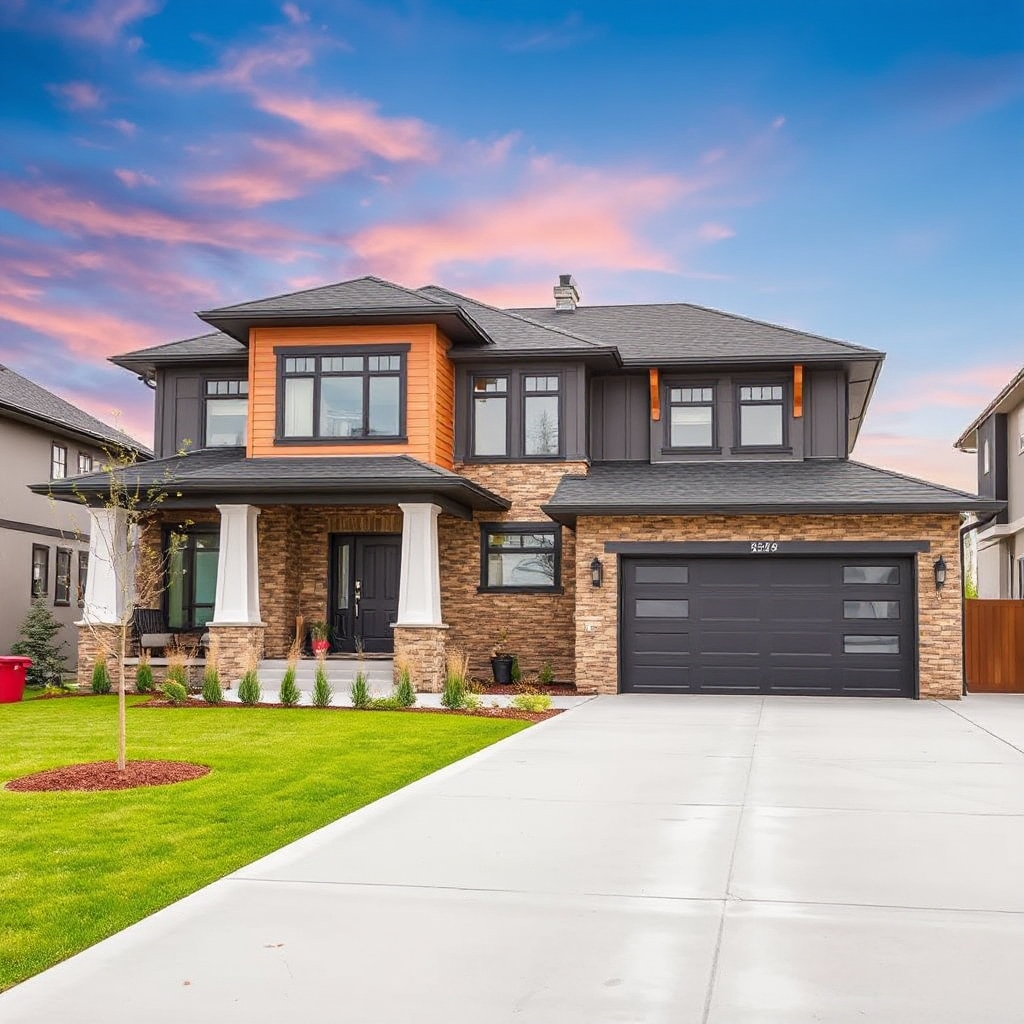
Maintenance and Long-term Considerations
Once your prefab home is complete, consider maintenance and long-term care.
Warranty coverage provides a safety net for addressing unforeseen issues.
Adhering to a regular maintenance schedule keeps your home in peak condition, preserving its functionality and value.
Prefab Homes Can Reduce Utility Costs
Energy efficiency benefits of prefab homes can reduce utility costs and contribute to environmental sustainability.
Resale value is another consideration, with well-maintained prefab homes holding their value well in the market.
Maintaining the Integrity of Your Home
Insurance requirements may vary for prefab homes, so ensure your policy covers your specific needs and risks.
Future modifications, such as expansions or upgrades, should comply with building codes.
This will help to maintain the integrity of your home’s design.
Building Your Future in a Prefab Home
Purchasing a prefab home in Ontario offers a unique blend of flexibility, cost-effectiveness, and customization.
By understanding the process from financing to maintenance, you can make informed decisions that enhance your buying experience.
No matter whether you’re drawn to their modern designs or the efficiency of the construction process.
Prefab homes provide a compelling option for homebuyers in Canada.
Choosing My Own Cottage
Embark on your journey to homeownership by choosing My Own Cottage, renowned for excellence in prefab home construction.
Discover tailored solutions and flexible financing options. We cater to your unique preferences and budget.
With My Own Cottage, transform your vision into reality with precision and care.
Let’s ensure your dreamy prefab home in Ontario is not just an aspiration.
Rather, it becomes a fulfilled promise.
Reach out to us today and make the first step towards the home you’ve always envisioned.
Helpful References and Resources
- Prefab Review – A comprehensive guide to prefab home manufacturers and their offerings.
Website: www.prefabreview.com
- Dwell – Articles and in-depth looks into innovative prefab home designs and trends.
Website: www.dwell.com
- Prefab Homes Hub – A resource for finding builders, manufacturers, and designs across the globe.
Website: www.prefabhomeshub.com
- Houzz – A platform to explore prefab home projects, professionals, and design ideas.
Website: www.houzz.com
- ICF Homes Ontario – Specialized resources for insulated concrete form prefab homes.
Website: www.icfhomesontario.com
- Tiny House Listings – Focused on small-scale prefab homes and accessory dwelling units.
Website: www.tinyhouselistings.com
- Better Homes & Gardens – Expert advice and insights into prefab home styles and sustainability.
Website: www.bhg.com
- ArchDaily – Articles and updates on the latest in prefabricated architecture.
Website: www.archdaily.com
- Prefab Housing Canada – Dedicated to prefab housing news and information specifically in Canada.
Website: www.prefabhousing.ca
- Inhabitat – Showcasing green and sustainable prefab home designs worldwide.
Website: www.inhabitat.com
- Prefab Homes Network – Network of prefabrication experts and information sharing.
Website: www.prefabhomesnetwork.com
- Homedit – Ideas and inspirations for prefab home interiors and designs.
Website: www.homedit.com
- Freshome – Comprehensive guides and news on prefabricated home solutions.
Website: www.freshome.com
- BuildPrefab – Listings and reviews of prefabrication services and products.
Website: www.buildprefab.com
- LifeEdited – Focused on compact and innovative prefab living spaces.
Website: www.lifeedited.com
- Prefabs.com – Offers directories of prefab home suppliers and custom kit options.
Website: www.prefabs.com
- Green Building Canada – Insights into eco-friendly prefabricated home practices within Canada.
Website: www.greenbuildingcanada.ca
- Designboom – Features on cutting-edge prefab architecture and design projects.
Website: www.designboom.com
- Modern Prefab – An advanced look at the latest in modern pre-fab housing.
Website: www.modernprefab.com
- Building Systems Councils – National Association of Home Builders resource for education and advocacy of prefab construction.
Website: www.nahb.org
